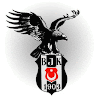Founders Lionel Martin and Robert Bamford started Aston Martin in 1914. The two had seen some success selling Singer racing cars, but wanted to craft their own vehicles, with an emphasis on sophistication and refinement. The brand took its name from co-founder Martin and the Aston Clinton Hill Climb, where the duo's Singer cars had competed.
Originally, Aston Martin was known chiefly in racing circles. By the 1920s, the brand had made its first appearance overseas, participating in the French Grand Prix; it also participated in the Le Mans 24-hour race. The marque saw its share of financial difficulties during the '20s and '30s, undergoing numerous changes in ownership. Still, it made a name for itself with popular racing cars like the streamlined 1934 Ulster.
The postwar years saw the brand change hands once again. Aston Martin was sold to David Brown, an industrialist with a successful tractor company. After purchasing the company in 1947, he set his sights on developing new models. The first was the DB1 (named after his own initials), introduced in 1948. It was soon followed by the DB2 and DB3.
The 1950s saw Aston Martin establishing itself as a winner on the track, with the DB2 placing in its class at Le Mans. As the decade drew to a close, the brand had launched yet another model — the DB4 — and scored wins at the World Sportscar Championship, the Nürburgring and the RAC Tourist Trophy.
During the 1960s, Aston Martin began production on the DB5. The low-slung coupe looked glamorous enough to be in the movies, and soon it was; the DB5 was the vehicle of choice for Sean Connery's James Bond in 1964's Goldfinger. By the time the '60s came to a close, the Aston Martin family had grown to include the DB6 (which stands as the first four-seater produced by the marque) and DBS V8.
The 1970s were a rough decade for Aston Martin. The brand was sold by David Brown in 1972, and then once again was passed from owner to owner. Still, a new model, the V8 Vantage, was launched in 1977. Ten years later, Ford Motor Company purchased Aston Martin and invested millions in research and development in hopes of restoring the brand to its former glory.
By the 1990s, Ford's considerable efforts had begun to pay off. The handsome DB7 debuted mid-decade and was a hit with both critics and buyers. Aston Martin's fortunes continued to soar in the 2000s, with the launch of the successful V12 Vanquish, the DB9 and the V8 Vantage. Still, subsequent financial trouble at Ford led to the sale of Aston Martin in 2007 to a group of investors which included a pair of Kuwaiti investment companies. Recent models include the exotic DBS, which is a more muscular version of the DB9, and the four-door, four-seat Rapide. Indeed, the current Aston Martin lineup comprises some of the world's most desirable cars.
Source: www.edmunds.com














0 yorum:
Post a Comment